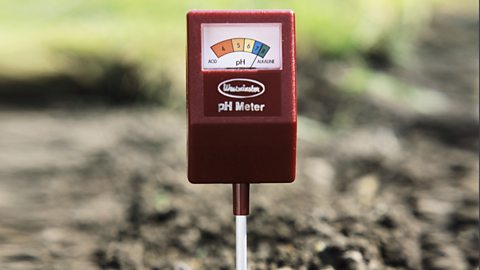Abiotic factors affecting the abundance & distribution of organisms
The abundance is the number of organisms in an ecosystemThe living organisms in a particular area, together with the non-living components of the environment. and their distribution is affected by abioticNon-living elements of an ecosystem, such as climate, temperature, water, and soil type. factors. These are factors that are non-living.
They include:
Light intensity
Some plants have evolved for optimumThe best or most appropriate - for instance, the conditions under which an enzyme works best (eg temperature and pH). growth in bright sunlight. An example of this is a cactus houseplant. Cacti originally come from deserts where they grow in bright sunlight. Other plants have evolved to grow in shade.
Many orchids, which are also kept as houseplants, grow on trees in the rainforest and have evolved for optimum growth in darker conditions. If you were to put an orchid on a bright windowsill and a cactus in a dark corner of your room neither plant would grow well.
Temperature
Both animals and plants have evolved to grow healthily at their optimum temperatures. If you planted either your cactus or orchid houseplants outside in cold temperatures, they would die. Similarly, animals that have evolved to live at the North Pole, such as the polar bear, could not survive in warmer conditions.
Moisture levels
More people kill houseplants by overwatering than by under-watering them. Many plants cannot survive in waterlogged soils. Their roots are unable to respireTo engage in respiration, the energy-producing process inside living cells., they rot and the plant dies. Other plants, such as pitcher plants, grow best in bogs where the moisture levels are high. Soil moisture meters can accurately determine how wet an area is.
Soil pH content
The pH of soils can have a huge effect on the plants that are able to grow in them. Some plants, like azaleas, grow best in acidic soils and will quickly die if planted in alkaline soils. Others, like clematis, prefer alkaline soils. Some, like the hydrangea, can grow in both. These plants are unusual in that their flower colour changes in different soils. Just like universal indicator paper, hydrangea flowers are blue in acidic soils and pink in alkaline soils.

The pH of water can also affect the aquatic organisms that are found there. Different species have evolved to survive at different pH levels found within water.
Soil mineral content
Many plants require high levels of soil minerals to grow well. An example of this is magnesium, which is required to produce chlorophyll. Plants with unnaturally yellow leaves may have a magnesium deficiencyIn the diet, a deficiency happens if there is too little of a particular nutrient.. Carnivorous plants, such as pitcher plants, have evolved to catch insects to supplement the low levels of minerals found in the soils in which they grow.
Wind intensity and direction
The strength of the wind and its direction has a huge impact on where organisms are found within ecosystems. Many organisms prefer more sheltered locations. Plant seeds are more likely to settle and germinate there, and animals which depend upon these are more likely to live close to where they grow. The strength of the wind can also affect the growth of individual organisms.
Carbon dioxide levels for plants
Carbon dioxide is a reactant in photosynthesisA chemical process used by plants to make glucose and oxygen from carbon dioxide and water, using light energy. Oxygen is produced as a by-product of photosynthesis. Algae subsumed within plants and some bacteria are also photosynthetic. which means plants need it to survive. Areas with higher levels of carbon dioxide are more likely to have healthy plants growing. Farmers often release carbon dioxide within their greenhouses to maximise their yieldThe mass of product made in a chemical reaction. The percentage yield is a measure of the yield obtained compared to the maximum possible yield.. Woodlands often have higher carbon dioxide levels than open grassland, so many plants living in open areas have evolved mechanisms to overcome a shortage of carbon dioxide.
Oxygen levels for aquatic animals
Oxygen from the air and oxygen produced by aquatic plants dissolves in water. Without this, aquatic animals would suffocate and die. Healthy lakes and rivers have high levels of oxygen, and polluted waters often have low levels of oxygen. This pollution means that only certain speciesA type of organism that is the basic unit of classification. Individuals of different species are not able to interbreed successfully. can survive there such as sludgeworms. These are bioindicator species because their presence or absence informs us about the condition of the habitat.
These are bioindicators of oxygen levels within water.